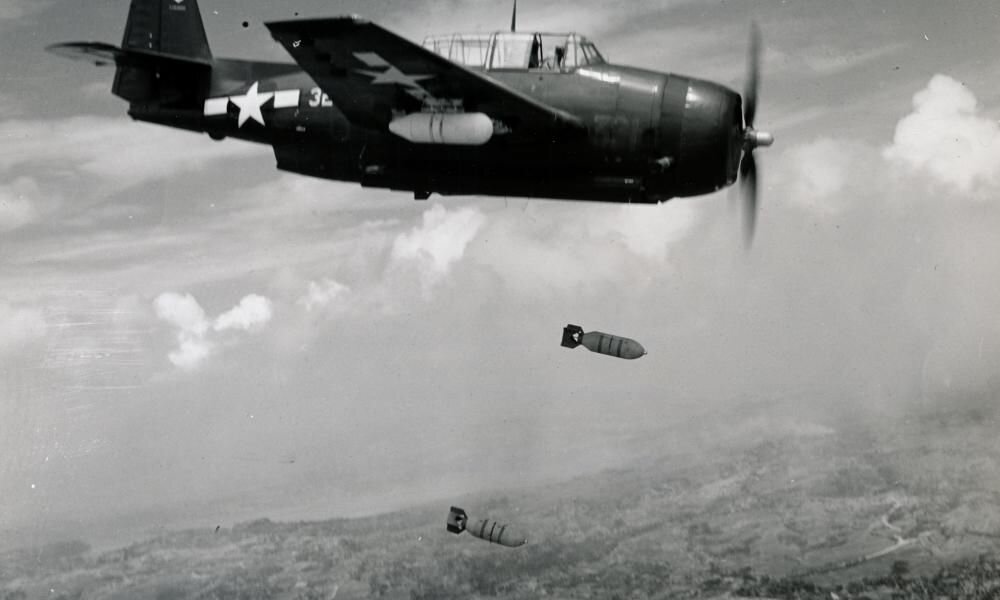*January 1944 Dated - "Kwajalein - SPECIAL PHOTO FLIGHT BY AGC” - U.S.S. Enterprise CV-6 Aerial Reconnaissance Photograph (Operation Flintlock)














*January 1944 Dated - "Kwajalein - SPECIAL PHOTO FLIGHT BY AGC” - U.S.S. Enterprise CV-6 Aerial Reconnaissance Photograph (Operation Flintlock)
Size: 7.5 x 7.5 inches
Letter of Authenticity included.
Dated January 30, 1944 this original ‘CONFIDENTIAL’ World War II USS Enterprise aerial reconnaissance photograph is marked “Kwajalein” and was taken by a U.S.S. Enterprise air group pilot and is also labeled with “USS ENT. CV6…SPECIAL PHOTO FLIGHT BY AGC”. Taken with a K-17 aerial camera, the K-17 camera was originally designed as an all-purpose aerial camera and was used widely throughout World War II for vertical mapping, photography, and all types of aerial reconnaissance intelligence and bomb damage assessment.
Following the pilots combat mission in the area, and their safe landing aboard the deck of the USS Enterprise this photograph was then developed aboard the carrier’s photographic development crew and was marked, used, and examined by USS Enterprise pilots (such as Lt. Moore) and other USS Enterprise high ranking commanders and officers.
USS Enterprise and Kwajalein:
Like an athlete at the peak of her condition, Enterprise was tirelessly in action for the entire year. In January she raided Taroa, in the Marshall islands, and then sailed north to pound Kwajalein atoll in preparation for its occupation. In February, she launched raid after raid against Truk, Japan's feared mid-Pacific fortress, breaking her own record for the tonnage of bombs dropped in a single day, and launching the first night bombing attack in the history of naval warfare.
B3-2. Planes from ENTERPRISE bombed and strafed shore installations on Moloelap, Wotje and Kwajalein in the Marshalls, and bombed and torpedoed several enemy ships including one cruiser and two submarines. The raid set back Japanese plans for strengthening bases in the West Central Pacific, and provided the first good news after the disaster at Pearl Harbor. The opposite result might have occurred if ENTERPRISE had not successfully evaded two determined bombing attacks from Japanese land-based planes, receiving only minor damage from a near-miss.
G4-1. On 1 November, ENTERPRISE departed Puget Sound for Pearl Harbor where on 10 November she joined the task force which was to support the landings on Tarawa, Makin and Apamama in the Gilbert Islands. On board were newly organized teams of night fighters, "Bat Teams," each consisting of a radar-equipped Avenger torpedo plane and two Hellcat fighters. ENTERPRISE planes struck at Makin during the three-day period 19-21 November and during the nights of 24, 25 and 26 November her night fighters successfully repulsed attacks by Japanese torpedo bombers against the task force. ENTERPRISE withdrew on the afternoon of 28 November, her part in the operation against the three islands completed. On the way back to Pearl Harbor she circled north of the Marshalls in order to launch a strike against shipping and shore installations on Kwajalein. She arrived in Pearl Harbor 9 December.
G4-2. ENTERPRISE departed Pearl Harbor 16 December to participate in the landings on Kwajalein in the Marshalls. Operating to the south and west of the islands, she provided planes for the bombardment of enemy aircraft and ground installations, for combat air patrol, anti-submarine patrol, photographic reconnaissance and for direct support of landing troops. The Japanese offered comparatively little resistance. No special night fighters were required and the occupation was completed by 4 February.
Comprehensive WWII combat history of USS Enterprise (CV-6):
The Yorktown class aircraft carrier, USS Enterprise (CV-6) was commissioned at Newport News, Virginia, on May 12, 1938. Relocating to the Pacific, she was at sea during the Japanese Attack on Pearl Harbor on December 7, 1941. Three days after, she became the first U.S. Navy warship to sink a Japanese warship, submarine I-70, and later that month participated in the Wake Island expedition. In April, Enterprise covered the Dootlittle Raid on Japan and participated in the Battle of Midway that June, where her planes helped sink three Japanese aircraft carriers and a cruiser. During the Guadalcanal Campaign, she covered the landings and participated in the battles of Eastern Solomons and Santa Cruz Islands. Despite being damaged in both battles, she launched aircraft to assist the ships involved in the Naval Battle of Guadalcanal. In late 1943 and early 1944, Enterprise took part in the Gilberts and Marshall invasions and air attacks on the Japanese in the Central and Southern Pacific. In the summer of 1944, she participated in the Marianas operation and the Battle of the Philippine Sea, followed with the largest naval battle in history, the Battle of Leyte Gulf in October.In February 1945, Enterprise took part in the Iwo Jima invasion, then raids on the Japanese home islands and the Okinawa campaign in April. Due to damage received by two kamikaze attacks in April and May, she returned to the United States with the distinction of being the most decorated U.S. Navy warship during the war. Following Japan's surrender, she helped transport U.S. servicemen back to the United States. Decommissioned in February 1947, Enterprise was re-designated (CVA-6) in October 1952 and then to (CVS-6) in August 1953. Despite efforts to turn her into a museum ship, she was sold for scrapping in July 1958.